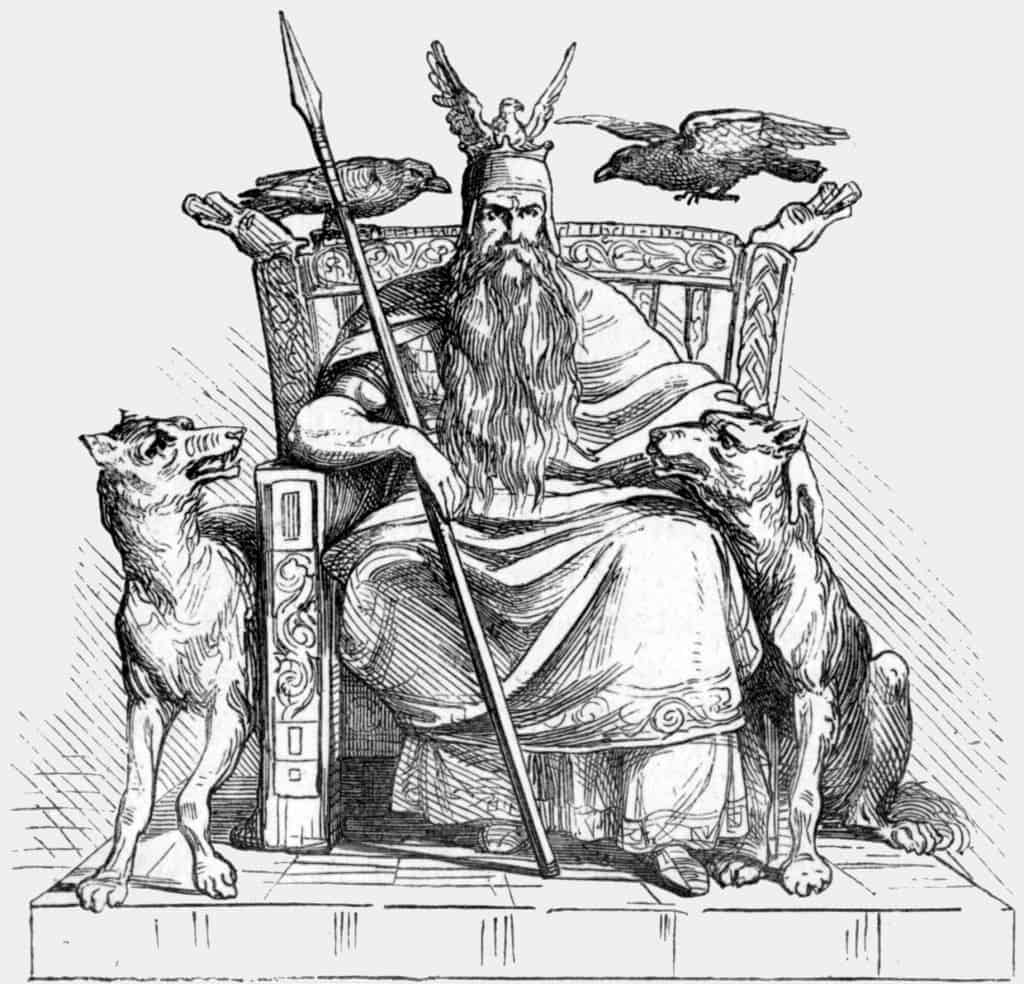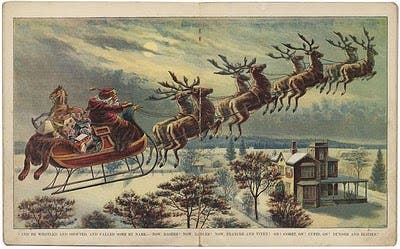Ah, Christmas is just around the corner. There’s so much going on with gifts and celebrations and meeting up with loved ones that it’s hard to keep up. Then, of course, there’s Santa Claus.
The embodiment of the Christmas spirit, Santa Claus, has undergone quite the metamorphosis over the years, and much of it is not even owed to religion or tradition, but rather because of marketing.
We’ve discussed the date of Christmas and how it is (or rather isn’t) connected to the birth of Jesus, and when we talked about the origins of some of the most popular traditions connected to Christmas. But Christmas wouldn’t be Christmas without Santa Claus, this bearded jolly man usually represented in green, blue, or purple clothing. Nope, I’m not crazy — Santa Claus used to sport all these colors, and he only became the big red man we know and love today thanks to a company called Coca-Cola — but we’ll get on that just a little bit later. Let’s dive into the origins of Santa Claus.
Saint Nicholas and Christmas

Santa Claus, also known as Saint Nicholas, Father Christmas, Kris Kringle, and simply “Santa”, is a figure with legendary, mythical, historical, and folkloric origins. In many western cultures, Santa is said to bring gifts to the homes of good children on the night before Christmas, December 24th. However, way before he was Santa Claus, he was Saint Nicholas.
Nicholas was born in Parara, Turkey in 270 CE and later became Bishop of Myra. He played a crucial role in early Christianity and was, by virtually all accounts, a very kindhearted man. Nicholas was famous for his generous gifts to the poor, in particular presenting the three impoverished daughters of a pious Christian with dowries so that they would not have to become prostitutes.
Things took a strange turn in 1087 when a group of sailors who idolized Nicholas moved his bones from Turkey to a sanctuary in Bari, Italy. Not long after that, the cult spread further North, until it was adopted by German and Celtic pagans. These groups worshiped Norse Gods, a pantheon led by Woden (Odin) — their chief god and the father of Thor, Baldur, and Tiw. Odin was usually wearing blue clothing.
Prior to Christianity, the Germanic people celebrated a midwinter event called Yule. During this period, supernatural and ghostly occurrences were said to increase in frequency, such as the Wild Hunt, a ghostly procession through the sky thought to be led by Odin himself. However, something that had happened many times before happened once again: Christianity absorbed this tradition and made it its own. When this happened, the date of 25 December came in and took the traditional 6 December. Saint Nicholas left gifts in the socks or shoes, but Santa Claus would ultimately just leave them under the Christmas Tree — but this took a while, because the Christmas tree wouldn’t become a custom for many centuries.
His appearance also changed from very strong and warrior-like (Odin) to more jolly, bearded, and pleasant-looking. Odin had just one eye, trading the other for a drink from the Well of Wisdom, and he was a fierce warrior. Santa Claus is, well not very warrior-like.
Santa Claus throughout Europe
In the Netherlands, Belgium, and Luxembourg, Saint Nicholas (“Sinterklaas”, often called “De Goede Sint”—”The Good Saint”) was an elderly, serious man with white hair and a long, full beard. He wears a long red cape or chasuble over a traditional white bishop’s alb and red clothes. This was, however, the only area in which he was red.
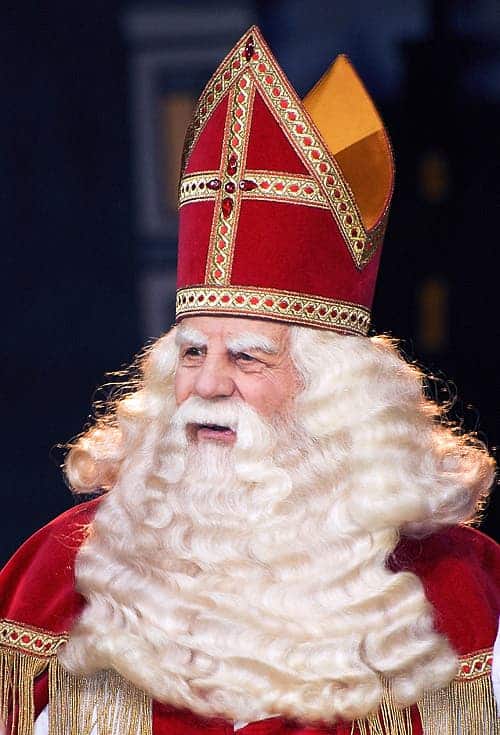
Meanwhile, in England, they were celebrating Father Christmas since the 16th century – the spirit of good cheer at Christmas, bringing peace, joy, good food and wine, and revelry. In Scandinavia, a being in Nordic folklore called “Tomte” or “Nisse” started delivering Christmas presents. He was wearing grey clothes. In Eastern Europe, they mostly celebrated Saint Nicholas by bringing gifts on the 6th of December (something still celebrated today in many countries, often in addition to Christmas). Other related figures in folklore include Mikulás (Hungary), the Yule Goat (Scandinavia), Olentzero (a Basque character), Befana (Italy), and many more.
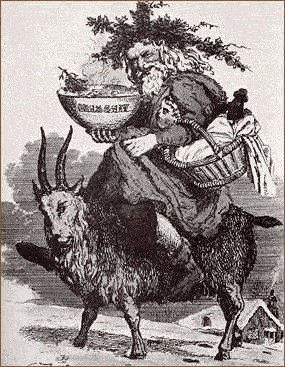
So different cultures had different depictions of a Christmas spirit, but at the beginning of the 19th century, the world still hadn’t developed a unified idea of Santa Claus. In the mid-1800s, literature started playing a huge role in promoting ideas about Santa Claus. The book A New-year’s present, to the little ones from five to twelve was published in New York. It contained Old Santeclaus, an anonymous poem describing an old man on a reindeer sleigh, bringing presents to children. The book was immensely popular for the time, and the ideas presented in it spread like wildfire. But most ideas about the modern Santa Claus came from an anonymous publication of the poem “A Visit From St. Nicholas” (better known today as “The Night Before Christmas”) in the Troy, New York, Sentinel on December 23, 1823. This poem would play a key role in defining how we see Santa Claus in the current period.
The poem was later attributed to Clement Clarke Moore. The main idea in the poem is that “He” (Saint Nick) rides a sleigh that lands on the roof, enters through the chimney, and has a bag full of toys. St. Nick is described as being “chubby and plump, a right jolly old elf” with “a little round belly”, that “shook when he laughed like a bowlful of jelly”, in spite of which the “miniature sleigh” and “tiny reindeer” still indicate that he is physically diminutive. The reindeer were also given names: Dasher, Dancer, Prancer, Vixen, Comet, Cupid, Dunder, and Blixem (Dunder and Blixem came from the old Dutch words for thunder and lightning, which were later changed to the more German sounding Donner and Blitzen).
The Modern Santa Claus and Coca-Cola
Haddon Hubbard “Sunny” Sundblom was an American Artist, most known for changing the face of Santa Claus, but also for making a cover illustration on the Playboy magazine, advertising Coca-Cola next to an almost naked, drawn, female character.
Images of Santa Claus were further popularized through Haddon Sundblom’s depiction of him for The Coca-Cola Company’s Christmas advertising in the 1930s. The campaign was so incredibly successful that many people actually thought that Coca-Cola had invented Santa Claus — which, in a way, was not that far from the truth. The company stripped him of his small stature and green/blue/purple clothes and instead, made him a big, lovable, bearded man, dressing him in the company’s red and white colors. This is the Santa Claus that almost all of us know today, and it’s essentially a company’s interpretation of a mishmash of different traditions.
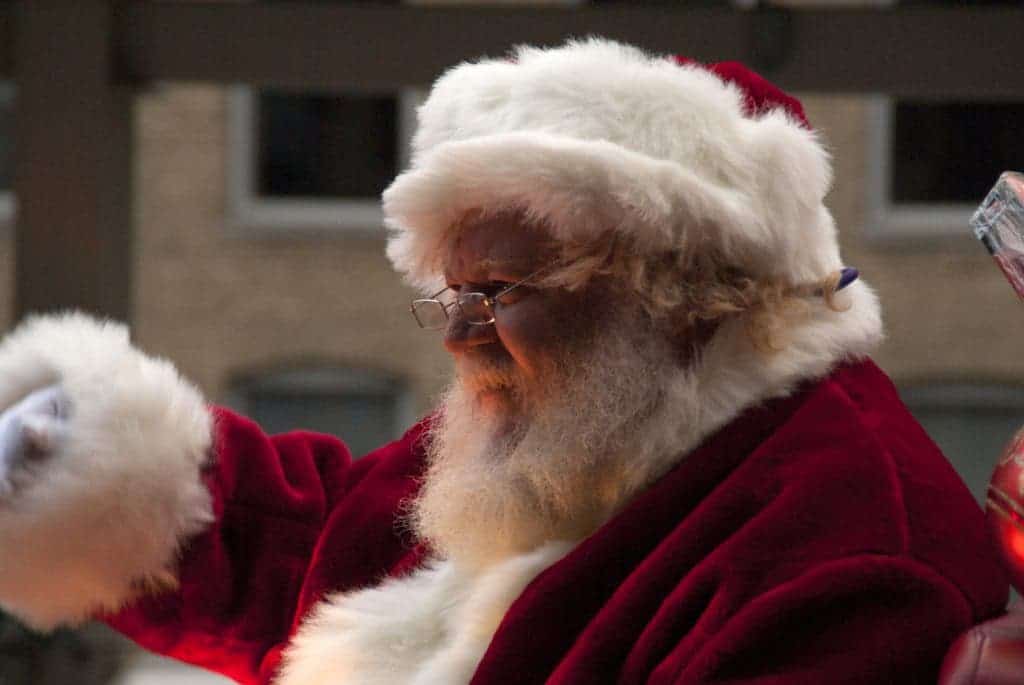
Yes, Santa Claus has definitely undergone quite the journey. He arose from the cultural merger of Saint Nicholas, Odin, and numerous cults and traditions from all over Europe, was chiseled by 19th-century literature, and ultimately shaped by an advertising campaign resulted in the jolly man we see today. Ho, ho, ho indeed.
